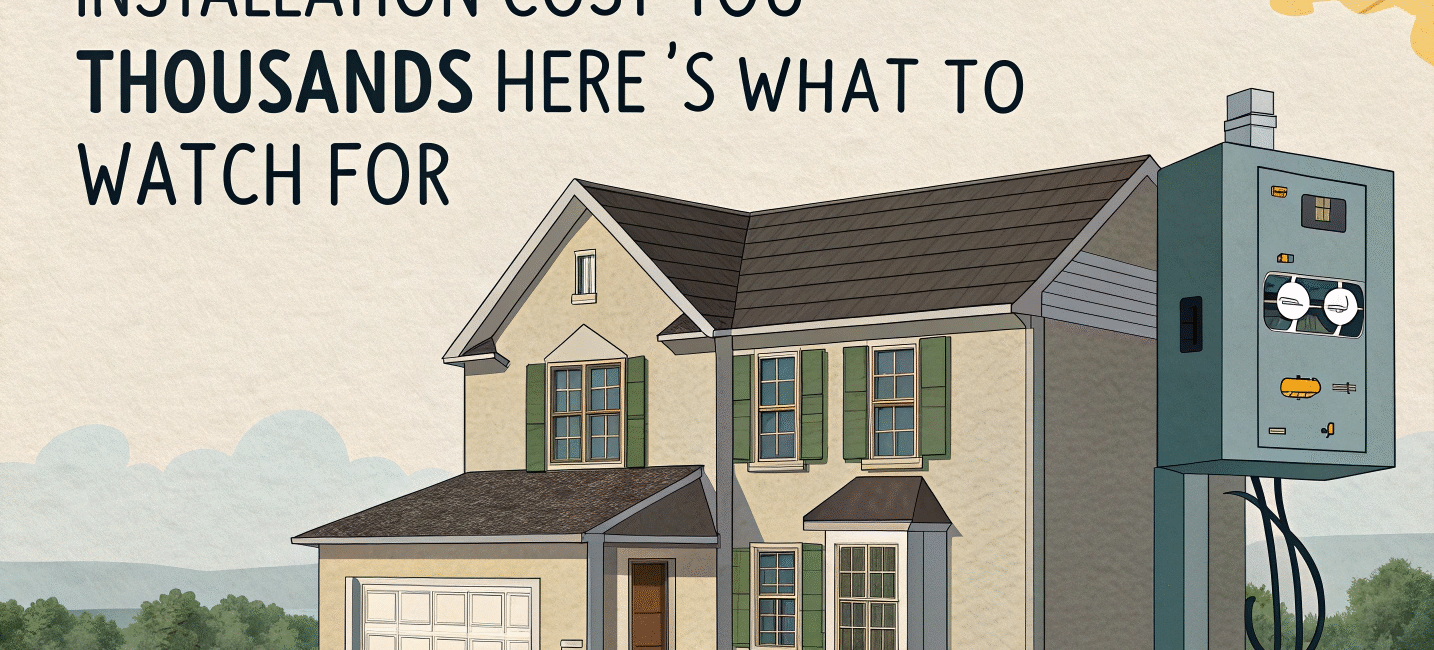
Imagine moving into a newly renovated home only to discover flickering lights, outlets that don’t work, or worse—smoke from your breaker panel. These issues are often traced back to one thing: poor electrical installation. The cost of fixing it? Often in the thousands. Besides the financial hit, you’re also risking safety and peace of mind. Unfortunately, not all electrical work is done with the right standards or experience. The good news is that with the right knowledge, you can spot problems before they start. Let’s break down what to look for, how to avoid costly mistakes, and how to get quality electrical installation service from the start.
Why Electrical Installation Isn’t Something to Cut Corners On
Electrical work might not be flashy, but it’s the backbone of your home’s safety. A bad electrical installation can lead to fires, shocks, or damage to appliances. Many homeowners try to save money upfront by hiring cheap labor or skipping inspections. Unfortunately, these shortcuts often result in major repairs down the road.
Moreover, faulty wiring can void home insurance or reduce your resale value. If an inspector spots substandard work, you may have to redo it all just to sell your house.
Common Warning Signs of Poor Electrical Work
How do you know if your electrical installation was done right? Keep an eye out for these red flags:
- Flickering or dimming lights
- Warm or discolored outlets
- Buzzing sounds from switches or panels
- Circuit breakers that trip frequently
- Outlets are not working at all
These signs might seem minor at first, but they often indicate big problems. Don’t ignore them.
The Hidden Costs of a Bad Installation
You might think you’re saving money by skipping permits or hiring an unlicensed contractor, but that decision can backfire.
Unexpected costs can include:
- Rewiring entire rooms
- Replacing damaged appliances
- Emergency electrician call-outs
- Fines for code violations
All of these expenses add up fast. A poor electrical installation can turn into a financial nightmare.
What a Good Electrical Installation Should Include
A proper electrical installation follows national safety codes, uses quality materials, and is performed by trained professionals. Here’s what it should involve:
- Securely mounted electrical panels
- Clearly labeled circuits
- GFCI outlets in kitchens and bathrooms
- Proper wire gauge for each circuit
- Grounding and bonding to prevent shocks
Most importantly, a professional will pull the proper permits and schedule inspections.
How to Choose the Right Electrical Installation Service
Not all electricians are created equal. When hiring someone for an electric installation service, look for:
- Licensing and insurance
- Positive online reviews
- Transparent pricing
- Willingness to explain the work clearly
- A portfolio of completed projects
Ask questions, get quotes, and never feel pressured. A quality provider will be happy to walk you through the process.
Questions to Ask Before Hiring an Electrician
To avoid regrets, ask these questions upfront:
- Are you licensed and insured?
- Will you handle permits and inspections?
- Can you provide references from past clients?
- What materials will you use?
- How long will the project take?
The answers will give you a good sense of their professionalism and reliability.
Don’t DIY—Why Electrical Work Requires Experts
YouTube makes everything look easy, but electrical work is dangerous without training. A single mistake could cause a fire or injury.
Professional electricians not only have the training, but they also carry liability insurance. If something goes wrong, you’re protected. When you do it yourself, and something fails? The responsibility and cost fall entirely on you.
Code Compliance Matters—Here’s Why
Every area has electrical codes that are created to keep homes safe. A legitimate electric installation service will ensure your setup meets these standards.
Code violations can lead to denied insurance claims, failed home inspections, or tear-outs. Even something small, like the wrong outlet in a bathroom, could become a major problem.
How Regular Inspections Save You Money
You don’t have to wait for a problem to check your system. Routine inspections every few years can catch early signs of wear or outdated wiring.
A certified electrician can spot things you might miss: overloaded circuits, signs of corrosion, or aging panels. These inspections often prevent huge issues and bigger bills down the road.
Investing in the Right Service Saves You Long-Term
Upfront costs for quality work may seem high, but they’re nothing compared to fixing a failed electrical installation. With proper service, you avoid sudden repairs, increase home value, and ensure safety.
Furthermore, many trusted providers offer warranties. That means peace of mind—and fewer unexpected headaches.
Conclusion: Don’t Let Electrical Mistakes Drain Your Wallet
A bad electrical installation can cost more than money, and it can put your safety at risk. Whether you’re building a new space or renovating an old one, always prefer quality. Know the warning signs, ask the right questions, and never settle for shortcuts. It’s not just about saving money, it’s about keeping your home and family safe.
Get reliable electrical installation service today with NT Electrician; your safety and savings depend on it.

